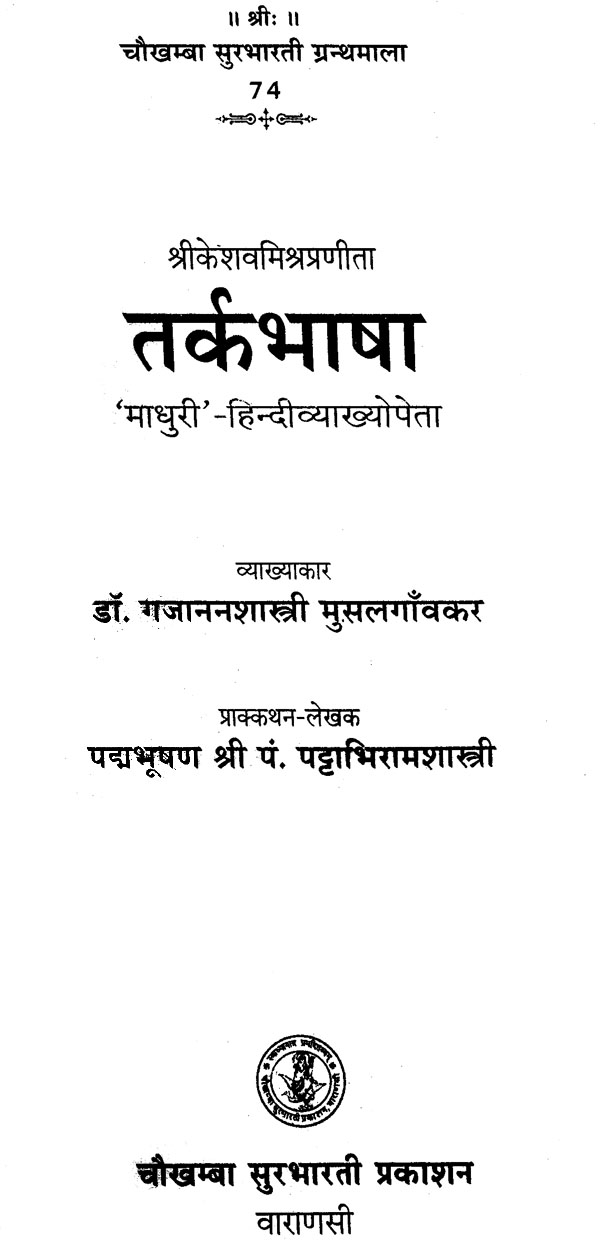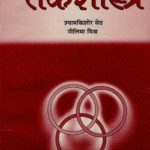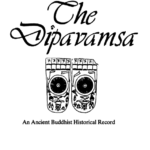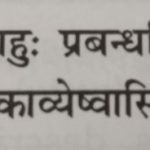
The Tarkabhaasha literally means an Exposition of Reasoning. It was composed by Keshava Mishra, and “is an elementary treatise on the Nyaya System“. [1, iv] One of the elegant aspects of the Classical Indic Tradition is the Pan-India nature of the contributions. Despite distinct local cultures, there is a connection to the original Saptha-Sindhu sired society in Brahmavartha.
In our Article on Tarka Saastra, it was Annambhatta of Andhra who featured. But the composer of this Nyaaya Classic hails from the North.
Author
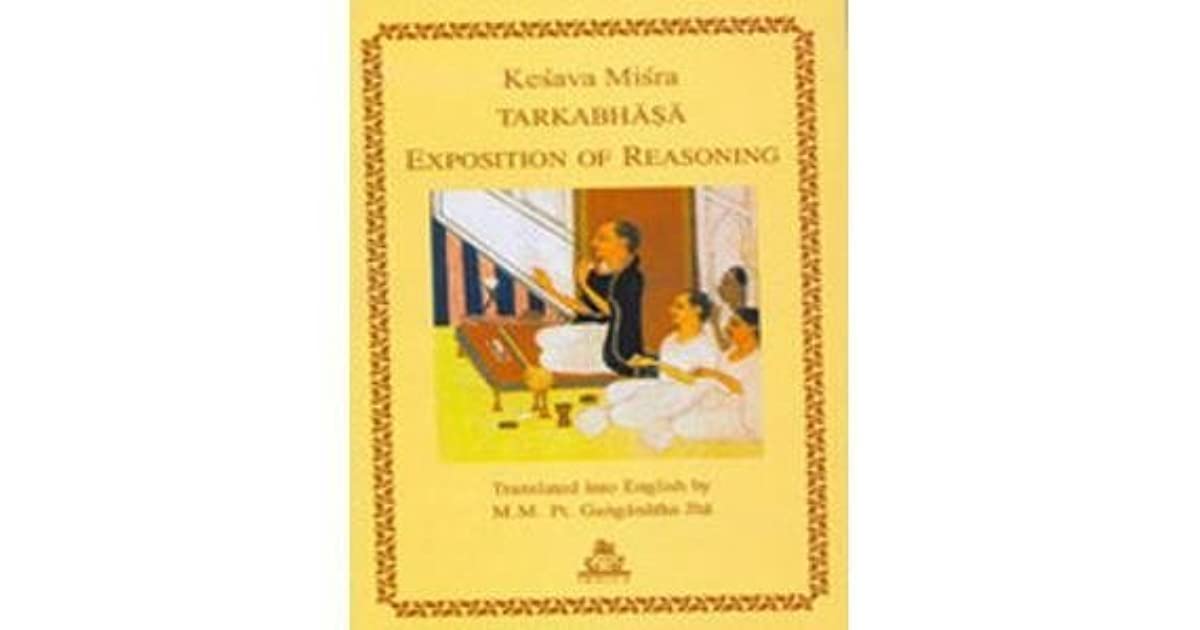
Kesava Misra was a Mithila brahmana, and hailed from what is now North Bihar. Originating in a distinguished community of Pandits, he is thought to lived some time between 1344 and 1419 CE. Not too much is known about him or his life. However, he certainly introduces himself as a successor of Akshapada Gautama (Founder of the Nyaya Darsana, or school of Philosophy) as well as Vatsyayana, who was a distinguished commentator on Nyaaya. Even the Slokavaarthika of another Andhra Brahmana, Kumarila Bhatta, is cited. This demonstrates the intellectual continuity between not only time periods and regions, but even the Shaddarsanas. Kumarila was a famous exponent of Purva Mimamsa and approximately coeval with Adi Sankaracharya.
Nevertheless, this is clearly an introductory work meant as Primer by the author’s admission himself: “In this work we have again and again explained those things that are extremely useful; if we have omitted to explain things not of much use, this fact can-not be urged against us; as what we have explained is enough for the purpose of the young learner.” [1, 104]
Composition
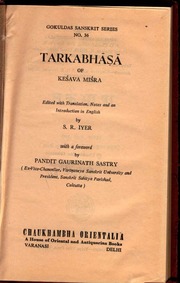
The composition is divided into 3 main sections. Section 1 treats Instruments of Right Cognition, better known as ‘Pramana’. Specifically, it is an exigesis on the 4 recognised Pramaanas of the Nyaaya Darsana. These are Pratyaksha (Perception), Anumaana (Inference), Upamaana (Analogy), and Sabdha (Word of a reliable person). [1]
Section 2 evaluates Objects of Cognition. These include Soul, Body, Sense-organs, and Substances. It then proceeds to study various Qualities, listing 24.
The text concludes in Section 3 by delineating assorted Weaknesses of Argument (Nigrahasthaanas). [1, iv]
Most appropriate is the author’s clarification of Samvaadha (Discussion), Vivaadha (Disputation), and Jalpa(Wrangling ). Argumentative Indians need to do more of the first rather than the last (wrangling), “its sole aim lies in demolishing of the opponent’s posi-tion…not leading to the establishing of one’s own position, is what is called ‘Wrangling“. [1, 90] Ergo, those without solutions should not be crowding out the debate out of sheer jealousy for other parties.
Opposing out of awareness of untruth is one thing, but opposing on the basis of personal dislike of another person or valid school is ultimately problematic. Keshava Mishra astutely establishes this while reifying the position of Veda as Divine in Composition. No doubt this will be difficult to digest for those kaapaalikas (tantrik chaarvaakas masquerading as Vedic Brahmanas) that assert a human origin to Vedas.
All this is clearly demonstrated in sections of the aforementioned Tarkabhaasha or Exposition of Reasoning.
Selections
§
I. “We proceed to explain the ‘definition’ of Pramana which is the first of the categories mentioned in the aphorism. It has been defined as the ‘Karana,’ ‘instru-ment’ or ‘means,’ of ‘Prama”right cognition’; the defini-tion being stated in the form ‘Pramana is the instrument of right cognition,’ where the word ‘Pramana’ states the object to be defined, and the phrase ‘the instrument of right cognition’ constitutes the definition.” [1, 2]
§
II. “There are some probans that are purely ‘negative’; for instance, when the presence of breathing is put forward as the probans or reason to prove the presence of soul; the syllogism being presented in the following form;— The living body has a soul, because it breathes—that which has no soul does not breathe, as for example—the jar” [1, 27]
§
III.”‘The Fallacious Reasons’ are of the following five kinds: — (1) the ‘Asiddha,’ ‘unproven or unknown’; (2) the ‘Viruddha’, ‘contradictory’; (3) the ‘Anaikantika’, ‘Inconclusive’; (4) the ‘Prakaranasama,’ ‘stultified or neutralised’; and (5) the ‘Kalatyayapadista, ‘Belated or annulled.'” [1, 32]
§
IV. “‘Sabda’ or ‘Word’ (as a Pramana) consists in the assertion of a trustworthy person. A ‘trustworthy per-son’ is one who speaks of things as they really exist…In the Veda, on the other hand, every one of the sentences is the work of God, who is supremely trustworthy and hence all Vedic sentences, being the ‘utterances of a trustworthy person’, are ‘instruments of right cognition'”. [1, 41]
§
V. “A Clincher is that whereby the opponent is silenced or defeated. It is of many kinds— such as ‘deficiency,’ ‘superfluity,’ ‘renouncing of position,’ ‘incoherence,’ fatuity,’ ‘admission of the opponent’s view,’ ‘contradic-tion,’ and so forth,—yet for fear of becoming too prolix we do not describe all of them. That which falls short of what is intended to be said, is called ‘deficient’; that which goes beyond what is intended is ‘superfluous’;”
“when one falls off from the position he had taken up, he is said to ‘renounce his position’; when what is said does not bear upon the subject under consideration, we have ‘incoherence’; when the man is absolutely incapable of finding an answer, we have a case of ‘fatuity’; when the man is made to admit the view of his opponent, we have the ‘admission of opposite view’; when the man demo-lishes what he originally wished to establish, we have a case of ‘contradiction.'” [1, 104]
§
Click here to Buy this Book!!!
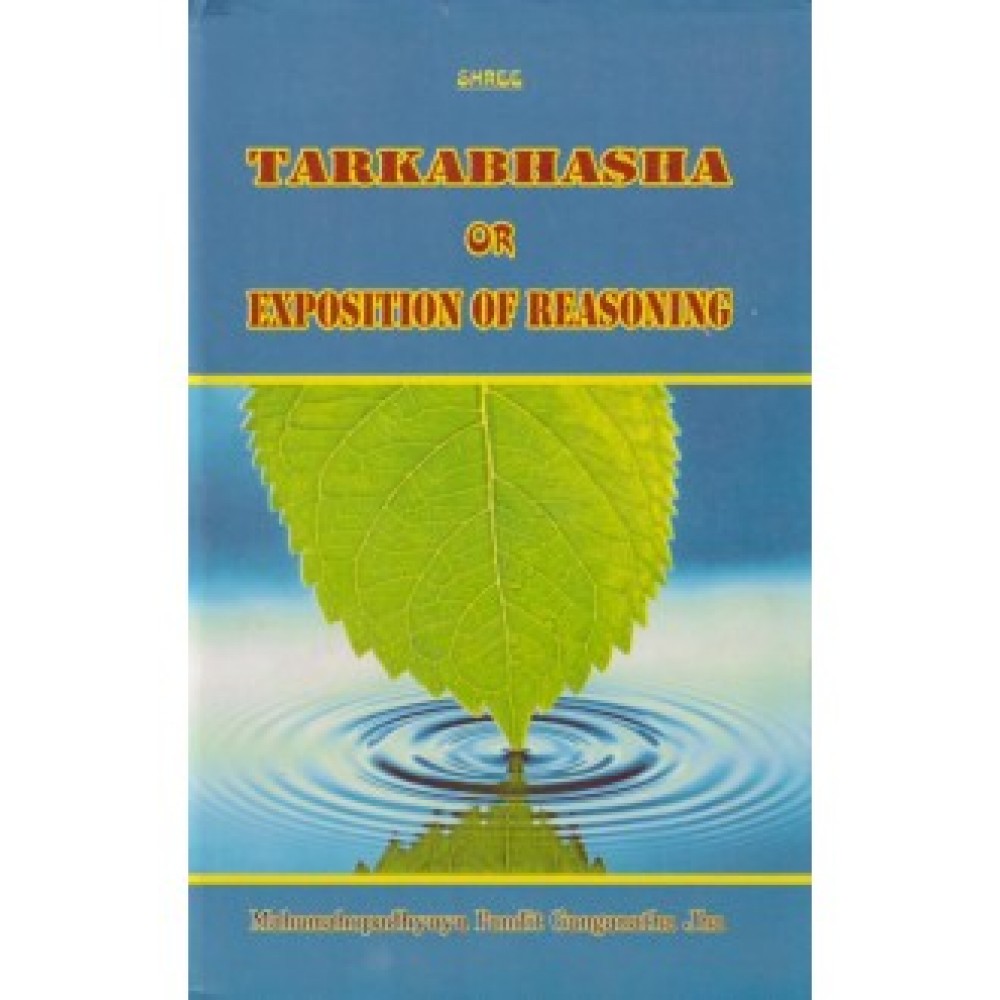
References:
- Jha, Pandit Ganganatha. Tarkabhasa or Exposition of Reasoning. Delhi: Chaukhambha. 2005
